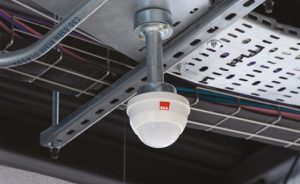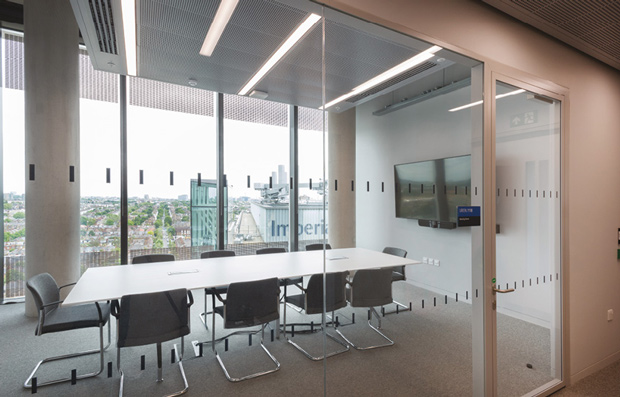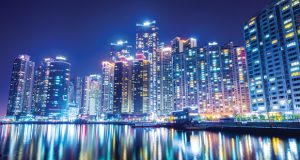LIGHT FOR WELLBEING
But saving money is only half the story. Just as important is how lighting affects the people inside the building. As we head into winter, many building occupants will arrive and leave in darkness. The quality and responsiveness of artificial lighting has a direct impact on how people feel and perform during the day. Poor lighting can cause eye strain, headaches, fatigue, and low mood – especially when daylight is in short supply. That is where Human-Centric Lighting (HCL) comes into play.
We’re strong advocates for HCL – systems that adjust colour temperature and intensity throughout the day to better support the body’s natural rhythms. Cooler, brighter light in the morning helps stimulate alertness and focus; warmer tones in the afternoon support calmness and reduce overstimulation. We’ve deployed this kind of lighting in multiple buildings – wherever people spend long hours indoors during the darker months.
The result is a better environment for everyone. Workers report higher satisfaction levels and absenteeism tends to decrease. Within environments like hospitals or care homes, where lighting plays a crucial role in health and safety, the benefits can be even more profound. For facilities managers, that means fewer complaints, better working conditions and tangible proof that their building is supporting wellbeing – not just energy performance.
LIGHTING CONTROL BENEFITS
And the beauty is: you don’t need to start from scratch. Most existing lighting systems can be retrofitted with sensors, control modules, and smart interfaces. Whether it’s a corridor in a school, a stairwell in an office block, or external lighting on a hospital site, these flexible, scalable solutions will integrate with common protocols like DALI, KNX, or LON, ensuring you can build a system that fits your site and your budget.
It’s also worth noting that lighting controls are low maintenance. Once installed and correctly commissioned, these systems largely run themselves – adjusting to occupancy, daylight, or schedule without needing constant input. For busy facilities teams juggling dozens of responsibilities, that kind of automation is invaluable.
 This winter, the pressure on buildings – and the people managing them – will be intense. Energy budgets are under scrutiny. Occupants expect more from their environments. And sustainability targets are more urgent than ever. Lighting controls are not a silver bullet, but they are one of the most straightforward, cost-effective upgrades available. They deliver results quickly, improve the user experience, and contribute meaningfully to long-term carbon goals.
This winter, the pressure on buildings – and the people managing them – will be intense. Energy budgets are under scrutiny. Occupants expect more from their environments. And sustainability targets are more urgent than ever. Lighting controls are not a silver bullet, but they are one of the most straightforward, cost-effective upgrades available. They deliver results quickly, improve the user experience, and contribute meaningfully to long-term carbon goals.
Questions for facilities managers to ask is where is energy being wasted? Where could automation bring consistency and savings? And most importantly – how can lighting be used not just to see, but to support the wellbeing of every person in your building?
Answering those questions helps facilities teams take control of their lighting – and their future. Because when the days are short and the bills are high, smart lighting isn’t a luxury. It’s a necessity.





